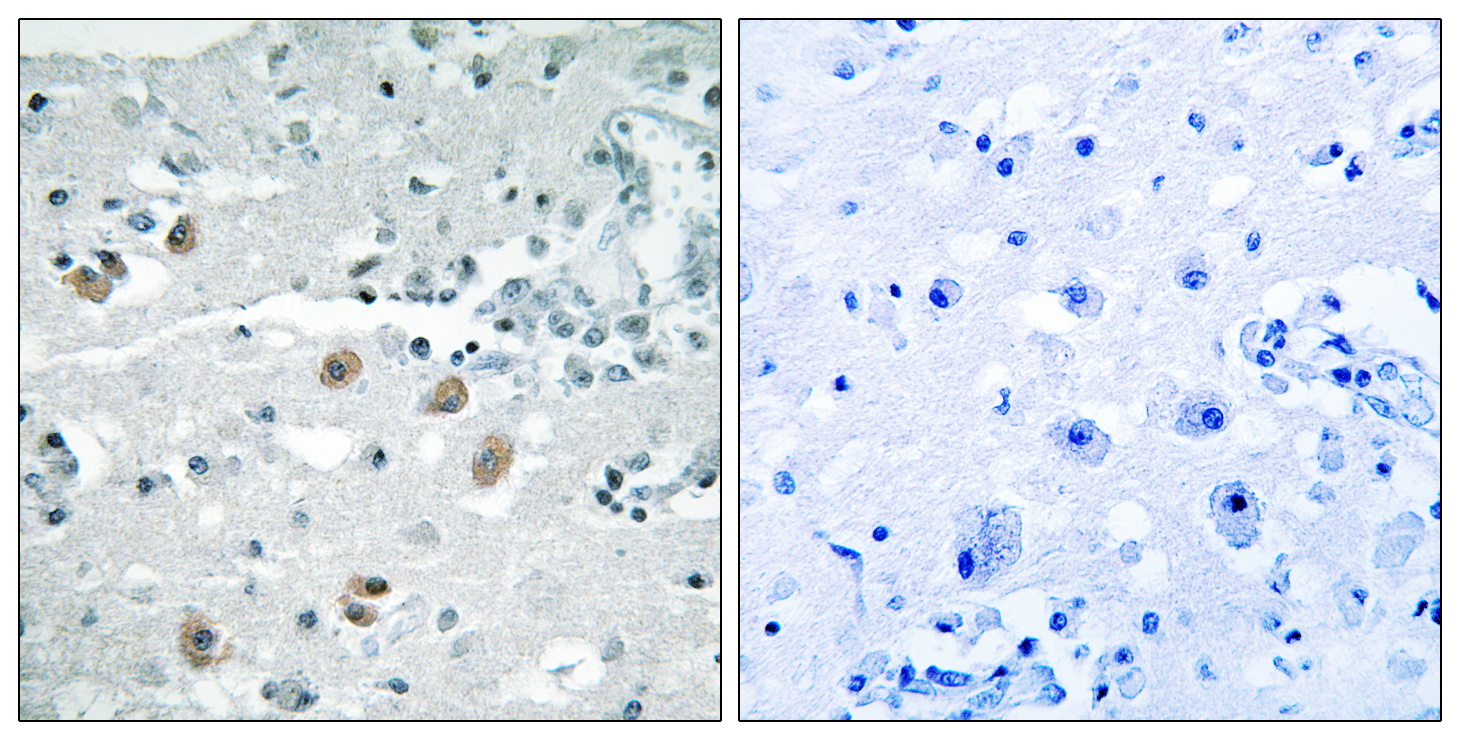cPLA2-δ Polyclonal Antibody
- Catalog No.:YT1086
- Applications:IHC;IF;ELISA
- Reactivity:Human;Mouse
- Target:
- cPLA2-δ
- Fields:
- >>Glycerophospholipid metabolism;>>Ether lipid metabolism;>>Arachidonic acid metabolism;>>Linoleic acid metabolism;>>alpha-Linolenic acid metabolism;>>Metabolic pathways;>>MAPK signaling pathway;>>Ras signaling pathway;>>Phospholipase D signaling pathway;>>Necroptosis;>>Vascular smooth muscle contraction;>>VEGF signaling pathway;>>Platelet activation;>>Fc epsilon RI signaling pathway;>>Fc gamma R-mediated phagocytosis;>>Glutamatergic synapse;>>Serotonergic synapse;>>Long-term depression;>>Inflammatory mediator regulation of TRP channels;>>GnRH signaling pathway;>>Ovarian steroidogenesis;>>Oxytocin signaling pathway;>>Choline metabolism in cancer
- Gene Name:
- PLA2G4D
- Protein Name:
- Cytosolic phospholipase A2 delta
- Human Gene Id:
- 283748
- Human Swiss Prot No:
- Q86XP0
- Mouse Swiss Prot No:
- Q50L43
- Immunogen:
- The antiserum was produced against synthesized peptide derived from human PLA2G4D. AA range:531-580
- Specificity:
- cPLA2-δ Polyclonal Antibody detects endogenous levels of cPLA2-δ protein.
- Formulation:
- Liquid in PBS containing 50% glycerol, 0.5% BSA and 0.02% sodium azide.
- Source:
- Polyclonal, Rabbit,IgG
- Dilution:
- IHC 1:100 - 1:300. ELISA: 1:40000.. IF 1:50-200
- Purification:
- The antibody was affinity-purified from rabbit antiserum by affinity-chromatography using epitope-specific immunogen.
- Concentration:
- 1 mg/ml
- Storage Stability:
- -15°C to -25°C/1 year(Do not lower than -25°C)
- Other Name:
- PLA2G4D;Cytosolic phospholipase A2 delta;cPLA2-delta;Phospholipase A2 group IVD
- Molecular Weight(Da):
- 92kD
- Background:
- The phospholipase A2 enzyme family, including PLA2G4D, catalyze the hydrolysis of glycerophospholipids at the sn-2 position and then liberate free fatty acids and lysophospholipids (Chiba et al., 2004 [PubMed 14709560]).[supplied by OMIM, Jun 2009],
- Function:
- catalytic activity:Phosphatidylcholine + H(2)O = 1-acylglycerophosphocholine + a carboxylate.,domain:The N-terminal C2 domain associates with lipid membranes and mediates its regulation by presenting the active site to its substrate in response to elevations of cytosolic Ca(2+).,enzyme regulation:Stimulated by cytosolic Ca(2+).,function:Calcium-dependent phospholipase A2 that selectively hydrolyzes glycerophospholipids in the sn-2 position. Not arachidonic acid-specific but has linoleic acid-specific activity. May play a role in inflammation in psoriatic lesions.,similarity:Contains 1 C2 domain.,similarity:Contains 1 PLA2c domain.,subcellular location:Translocates to membrane vesicles in a calcium-dependent fashion. Translocates to perinuclear regions upon ionomycin stimulation.,tissue specificity:Expressed in stratified squamous epithelia, such as those in skin and cervix, but not in ot
- Subcellular Location:
- Cytoplasm, cytosol . Membrane ; Peripheral membrane protein ; Cytoplasmic side . Translocates to perinuclear membranes that may correspond to endoplasmic reticulum or Golgi in a calcium-dependent fashion. .
- Expression:
- Expressed in stratified squamous epithelia, such as those in skin and cervix, but not in other tissues (PubMed:14709560). Strongly expressed in the upper spinous layer of the psoriatic epidermis, expressed weakly and discontinuously in atopic dermatitis and mycosis fungoides, and not detected in the epidermis of normal skin (PubMed:14709560).
- June 19-2018
- WESTERN IMMUNOBLOTTING PROTOCOL
- June 19-2018
- IMMUNOHISTOCHEMISTRY-PARAFFIN PROTOCOL
- June 19-2018
- IMMUNOFLUORESCENCE PROTOCOL
- September 08-2020
- FLOW-CYTOMEYRT-PROTOCOL
- May 20-2022
- Cell-Based ELISA│解您多样本WB检测之困扰
- July 13-2018
- CELL-BASED-ELISA-PROTOCOL-FOR-ACETYL-PROTEIN
- July 13-2018
- CELL-BASED-ELISA-PROTOCOL-FOR-PHOSPHO-PROTEIN
- July 13-2018
- Antibody-FAQs
- Products Images

- Immunohistochemistry analysis of paraffin-embedded human brain, using PLA2G4D Antibody. The picture on the right is blocked with the synthesized peptide.



